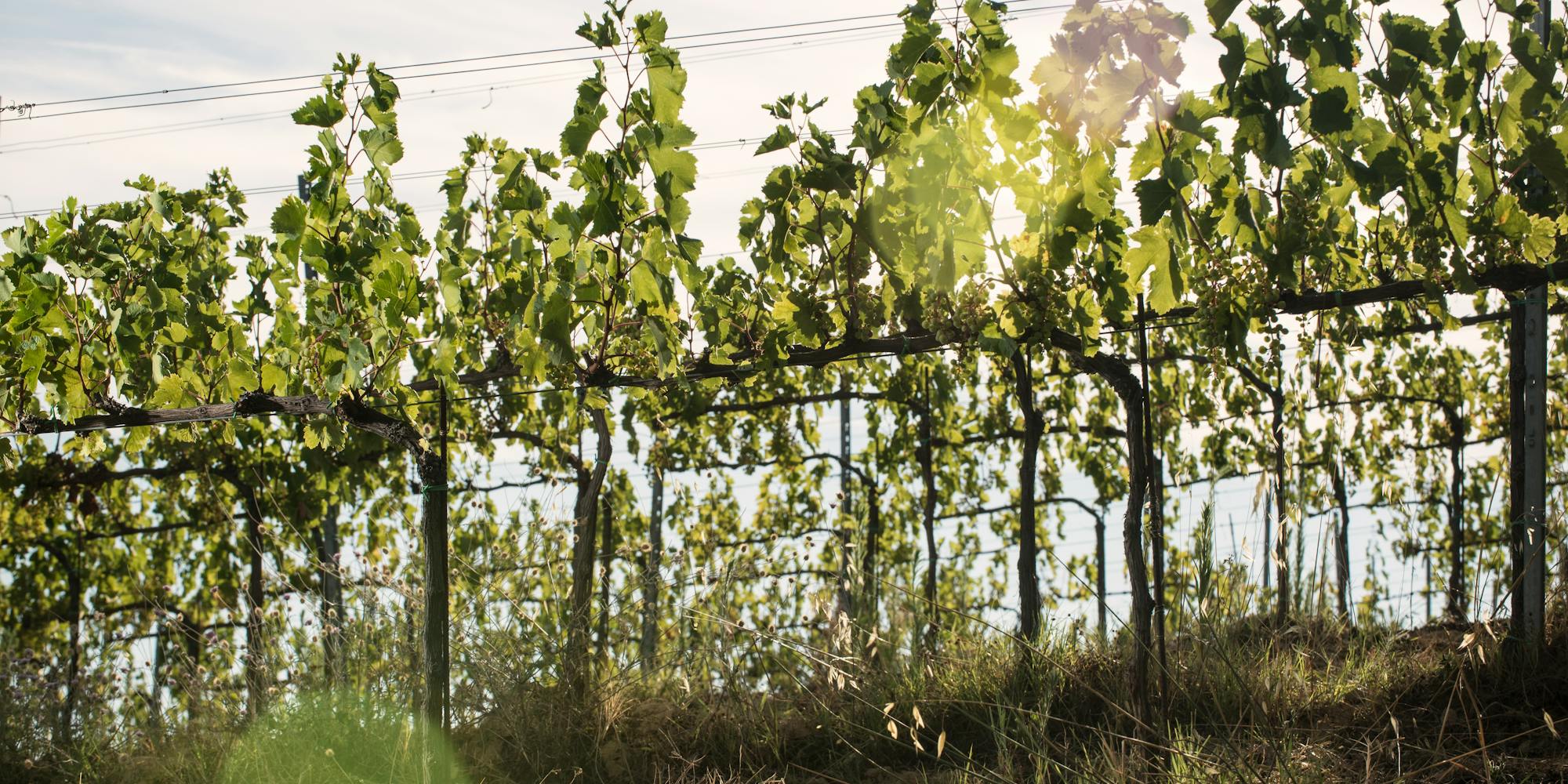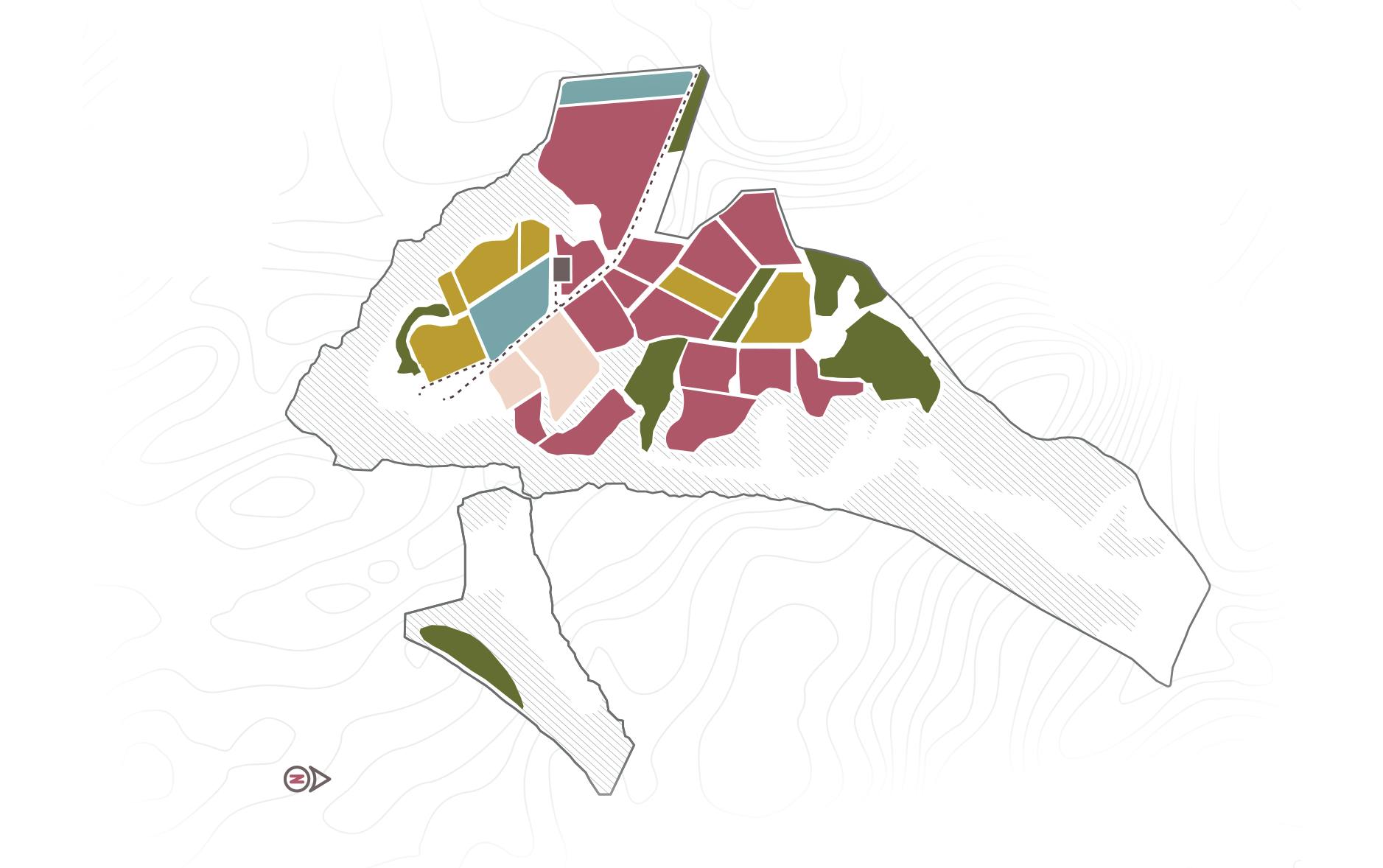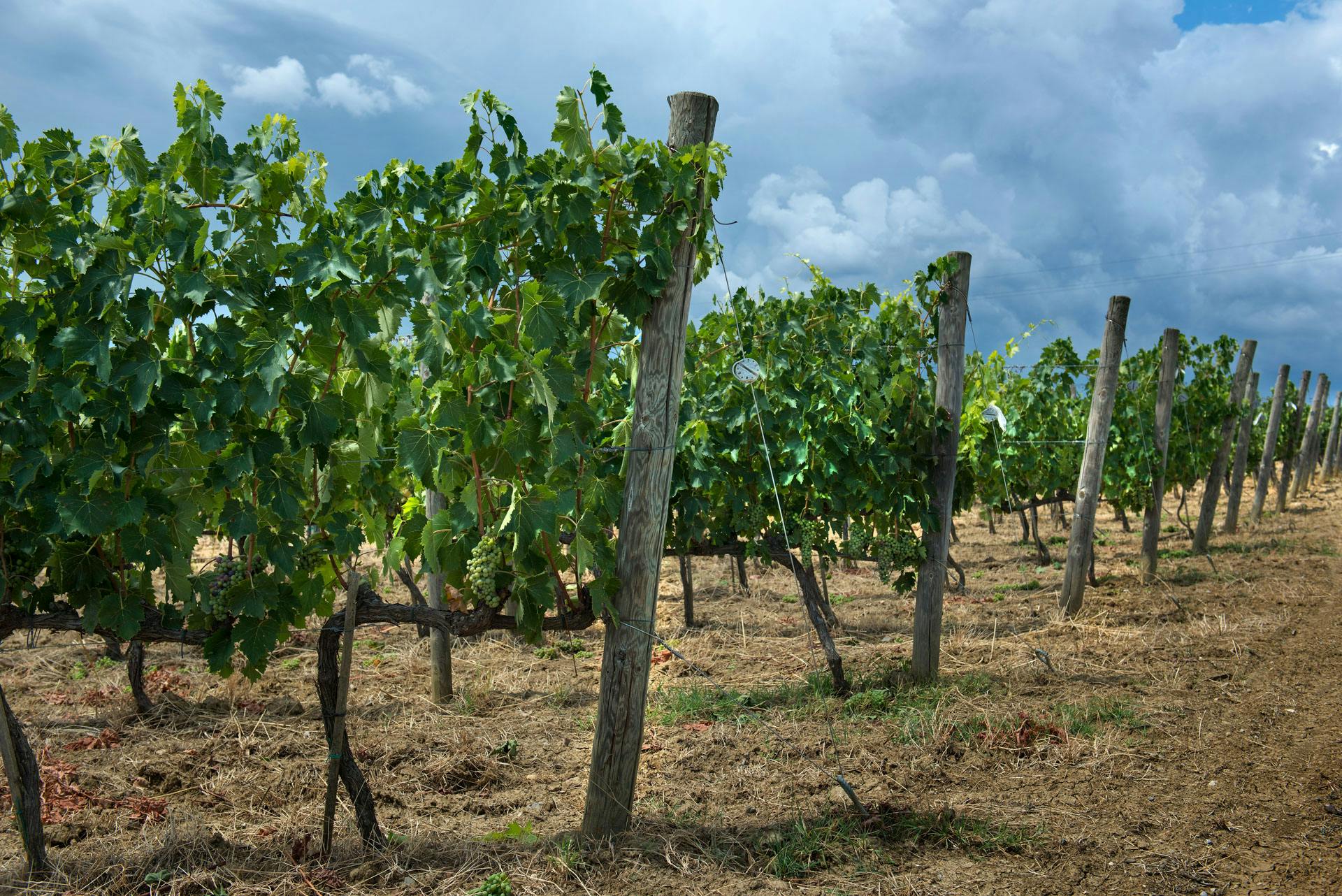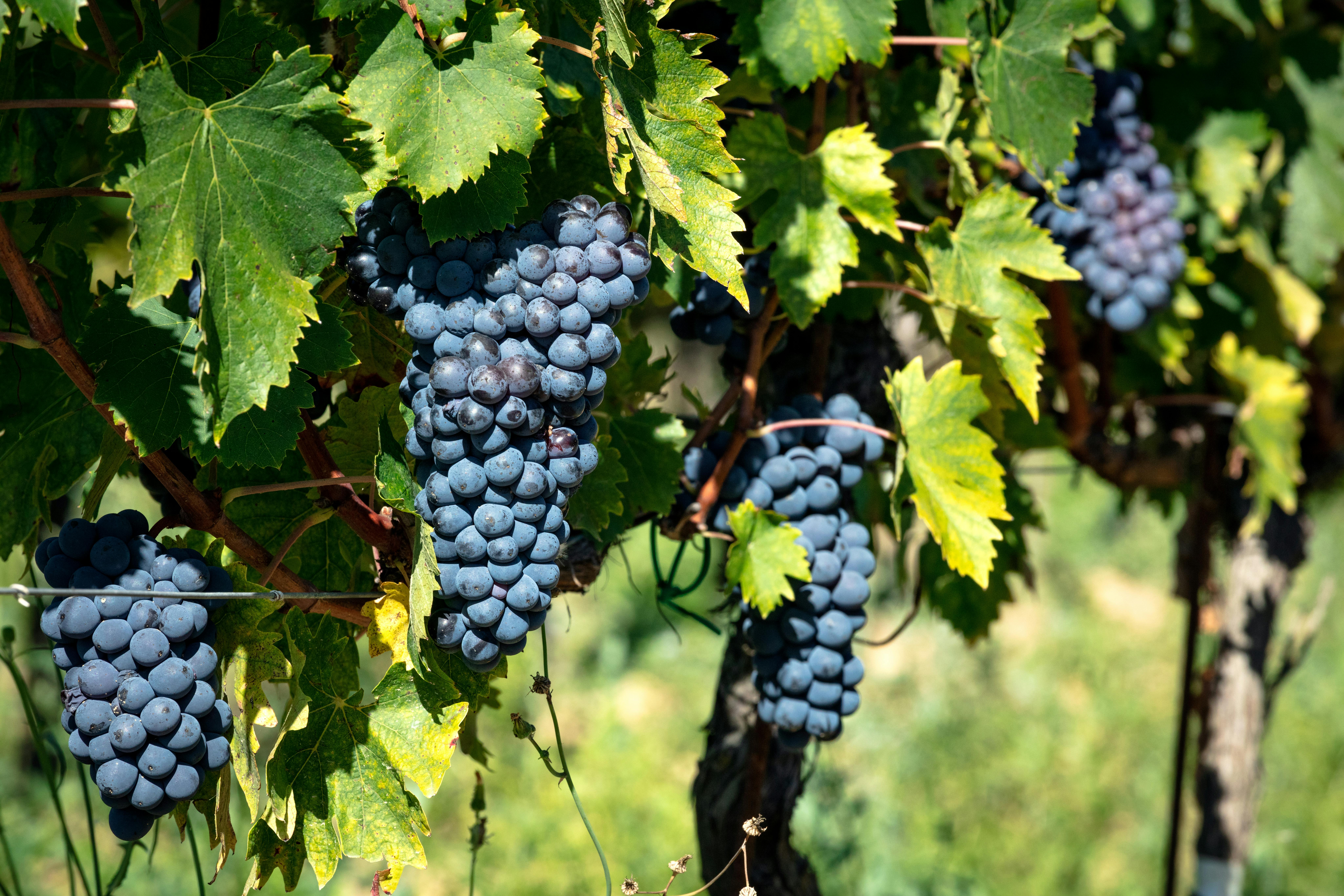
The vineyard
Terroir
We are in Tuscany and our terroir is Italian. But we think it is interesting to go further and analyse what is like and not like some other places. The climate of Pienza has strong analogies with the Rhone valley: it is less continental than the northernmost part of the valley, with marked summer temperature variations and winds throughout the year; less hot than the lower Rhone Valley, but similarly rainy. The climate is warm and temperate in Pienza. There is significant rainfall throughout the year, even in the driest month.
The hilly morphology that distinguishes Pienza recalls the southern part of the Rhone Valley while the soils are more similar to the Crozes-Hermitage area, where the calcareous clayey sands are predominant. The soils of Fabbrica are sandy-clayey with high cation exchange capacity, good supply of active limestone (about 8%), high supply of mineral salts (potassium, magnesium, calcium, iron, manganese, zinc, copper and iron) and lots of Pliocene and quaternary marine deposits. They are characterized by good structure, draining capacity and excellent propensity to retain useful water in depth. The soils are structurally more similar to those in Hermitage than in Chateauneuf du Pape, but from the analytical point of view they have strong analogies with both.
Knowing this, it is our goal to show that our terroir is unique and our wines have their own personality.

Val d'Orcia
All our vineyards are set in the new appellation Orcia DOC. Fabbrica is amongst the highest vineyards of the appellation with soils mainly composed of clay and sand. Thanks to the presence of the Orcia river and the Monte Amiata, there are also some sedimentary rocks with skeleton, some volcanic incursions and fossils, especially near Pienza that along with our way of making wine give a noticeable balance to our wines.


Handcrafted & Organic
Fabbrica is organic since the beginning and there is not a lot to say about it. Nevertheless, it is important to us to follow the wines and adapt to them. Each year depending on the vintage, we will change our practices, our schedule, our objectives to always highlight what is the most representative of our place. There is no magic recipe, but only impressions.

Wine variety
- Sangiovese
This is not really surprise, Sangiovese is the main varietal and it represents more than two third of our vineyards with 25 hectars split into 12 different plots.
It goes “in purezza” into all the new wines: NEW Red, Prototipo Spumante 2020 PetNat and obviously in the classic Sangiovese.
- Syrah
As we are not far from Cortona, we were curious to try this varietal here at Fabbrica. The first vintages were 100% Syrah, but obvisouly, Tim had another idea…
It represents around 10% of our vines and are split into 2 plots.
- Vermentino
For white wines in Tuscany, we had to have some Vermentino. Only 1 hectare and it is used for our new wine NEWTON white.
- Roussanne
- Marsanne
- Viognier
To go along the Syrah as a white varietal, viognier imposed itself. Actually, it is used in confermentation with our syrah since 2020.
- Petit Manseng
Less than 1 hectare. We are still experimenting and we have some ideas, but it is still a secret…